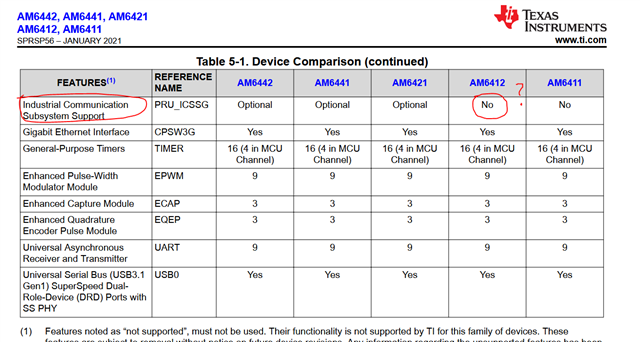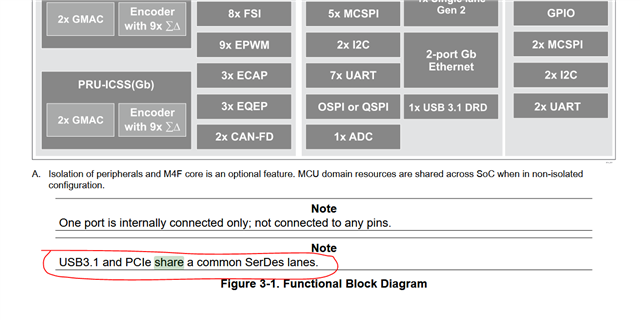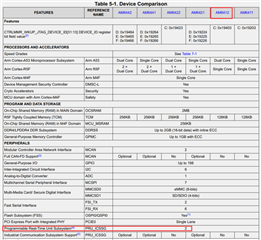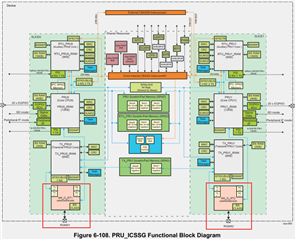Other Parts Discussed in Thread: AM6442, , PROFIBUS, LP8733, SYSCONFIG
Hi Team,
I noticed that TI come out AM64x series Sitara chip, I just ordered start kit of it for evaluation purpose. Currently I am thinking of using AM6412 (dual-core A53 with single core R5F), I knew that AM6412 would be released on Q4 of 2021, so I guess I probably have to use AM6442 on my prototype board.
I got a couple questions here,
1, do you have a single PMIC chip solution suggested for power up AM64x chip? I looked at the start kit schematic, looks like there are more than 3 chips, and there are power up and power down sequence specified also. What would be happen when lost power and unit doesn’t go through power down sequence, is it going to introduce latch-up condition to the chip?
2, for the cortex R5F core, does it support single precision floating point or double precision floating point?
3, for AM6412, in datasheet, feature of “industrical communication subsystem support” is marked as “No”, I guess it means not support for “profibus”, “ethercat” …, how come? Is the PRU different between AM6412 and AM6442? Is the PRU in AM6412 has less RAM comparing with AM6442?

4, on datasheet, it specified that “USB3.1 and PCIe share a common SerDes lanes”, what is imply? Is it meaning that USB3.1 and PCIe cannot work simultaneously at the same time? Would you please elaborate what’s the impact of this “share a common SerDes lanes”? USB and PCIe can work at the same time, but share the same throughput bandwidth limited by this SerDes lane, maybe?




